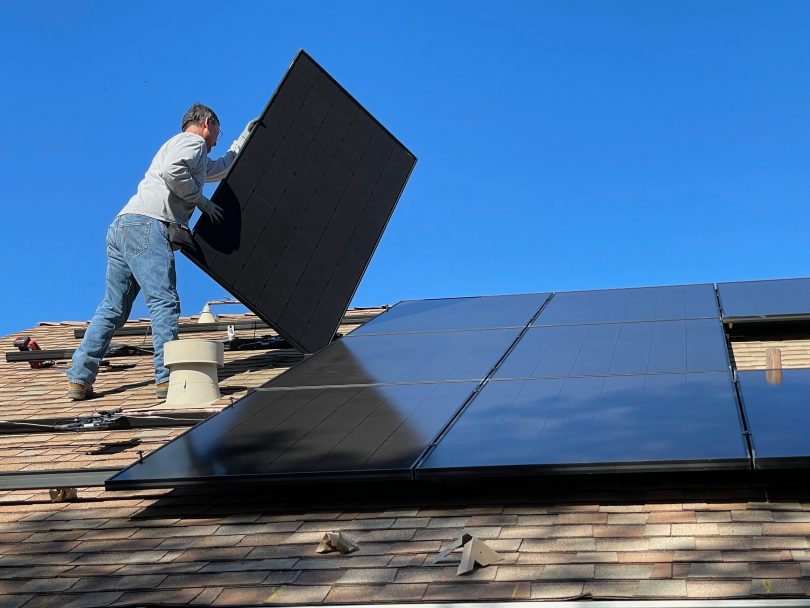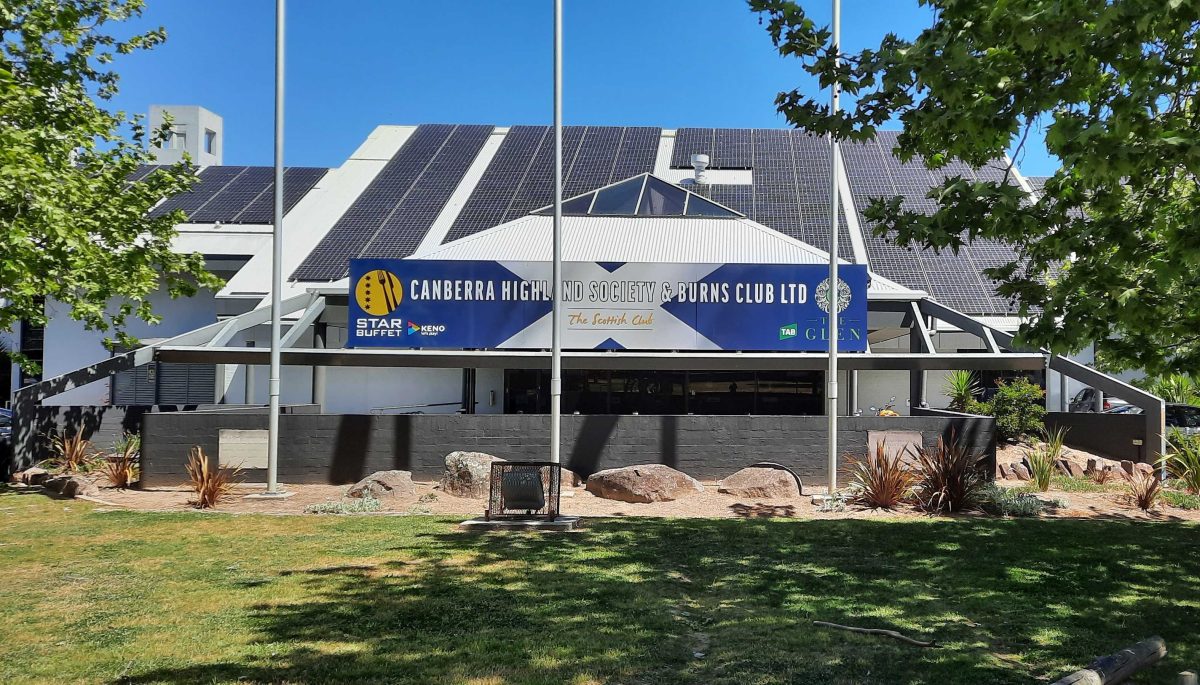
Solar panels have an estimated working lifespan of 25 to 30 years but many are decommissioned after a decade. Photo: Bill Mead.
Australia has the highest rate of solar panel usage per capita – they’re on more than 3.6 million Aussie roofs. ACT homes and businesses make up more than 39,000 of those. But there’s a problem.
The average lifespan of solar panels is estimated to be 25 to 30 years, so what happens when they reach the end of their productive life?
For many, at the moment, their final destination is landfill. In fact, UNSW Sydney estimates up to 90 per cent could end up in landfill, complete with toxic materials inside, including cadmium and lead.
The ACT Government has joined those in Victoria and South Australia in banning solar panels from entering the tip – they must be taken to e-waste drop-off points instead.
Up to 95 per cent of the materials in a solar panel can be recycled. The most valuable components are silicon and silver, but there are only tiny traces of each and companies struggle to make it worth the cost of extracting them.
According to the University of Sydney, the cost of recycling a solar panel in Australia is around $28, or roughly six times the cost of sending it to landfill ($4.50).
Dr Rabin Basnet from the ANU College of Engineering & Computer Science says that’s just the start of the challenge.
“Even though we say 25 to 30 years of service life in the real world, there are lots of cases where PV panels are decommissioned way before that – like in five or 10 years,” he says.
This can be because the polymer backing or the glass is cracked, letting in moisture. However, the modules inside often retain 80 per cent of their original capability.
Dr Basnet says many businesses find it easier to sell used panels to overseas buyers at bargain prices – usually in developing regions like Africa. World Vision even accepts donations of used solar panels and accessories (such as chargers, batteries and inverters) to power homes and schools in remote villages.
Other businesses simply heap them up in warehouses as a problem to deal with later or sell them through online marketplaces like Facebook and Gumtree.

A solar array on the roof of the Burns Club in Kambah. Photo: Ian Bushnell.
Dr Basnet is among a team of ANU researchers who have received a $214,374 grant from the ACT Government to investigate ways of changing this. Together with Mitchell-based PV Lab Australia and Circular PV Alliance, the plan is to refurbish the modules in old panels for reuse.
But that’s not the only problem.
“We need to test the modules before we can reuse them, and there is no standard procedure for this, so the first step is to create one,” he says.
However, cost remains a hurdle. New solar panels have come down in price to the point the Australian average is $0.93 per watt. In Canberra, the average price for a rooftop array ranges from $4,700 for a 3-kW system to $8,920 for a 10-kW system, including installation costs.
It will be hard to justify a steeper price for those panels containing reused modules, even if they are perfectly up to the same job. Dr Basnet is banking on social pressure and lower costs swinging in their favour over time.
“We should look at it from the environmental perspective because the one thing we proudly say about PV panels is how they are a renewable source of energy. But if we use them for a few years and then dump them, we’re losing this main purpose right here.”
He adds that now is the time to get this process sorted while volumes are relatively low.
“If you look at the next five or 10 years, the volume of decommissioned modules will be very high. We are worried about the next few years rather than the moment.”
Reuse might provide a short-term solution, but recycling remains the ultimate answer.
“After reuse, there needs to be recycling, and there’s work happening on that right now around the world. I’m optimistic.”
A test facility will be set up at the ANU over the coming weeks, and the research is expected to yield its first results by the end of the year.













